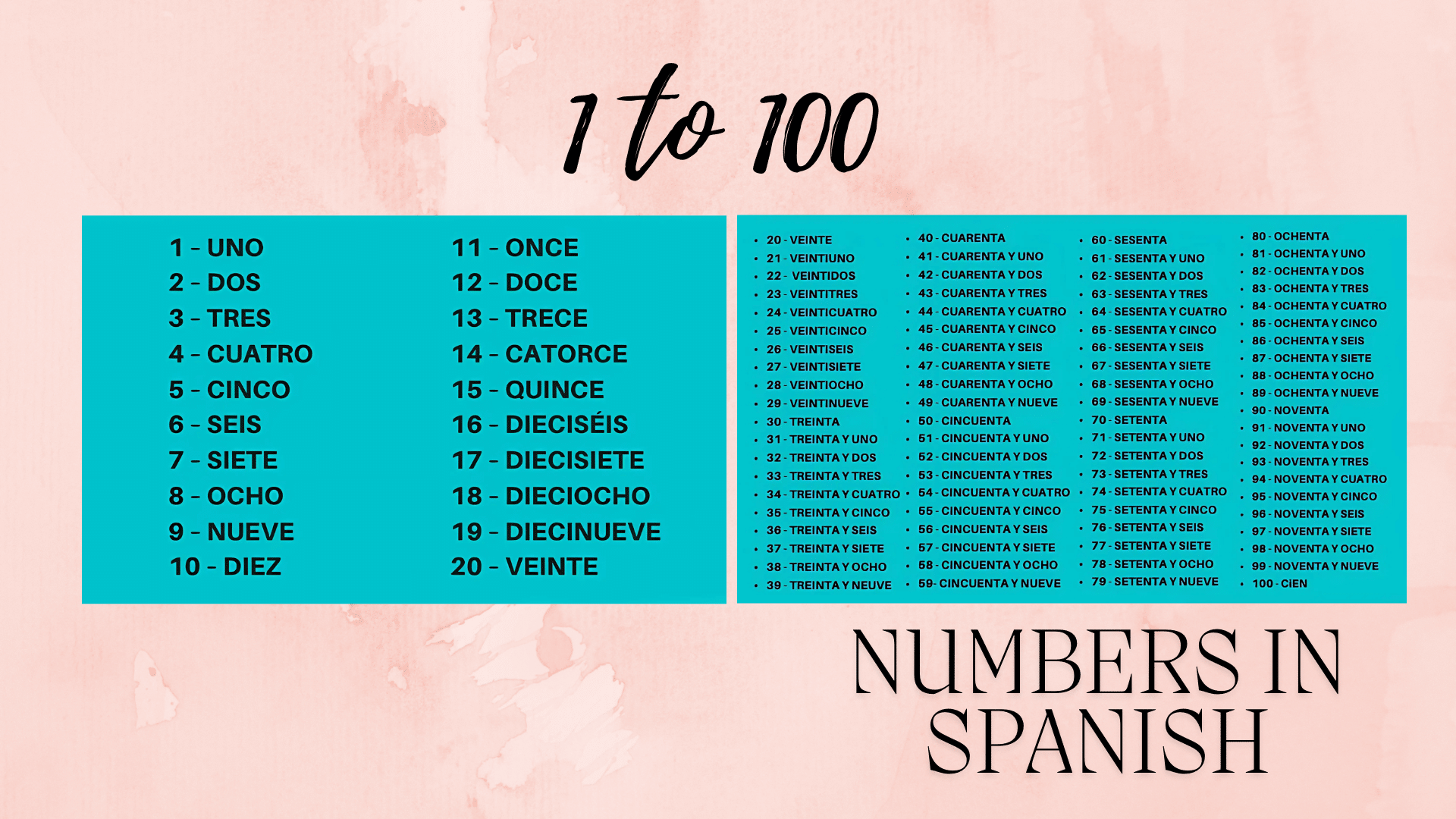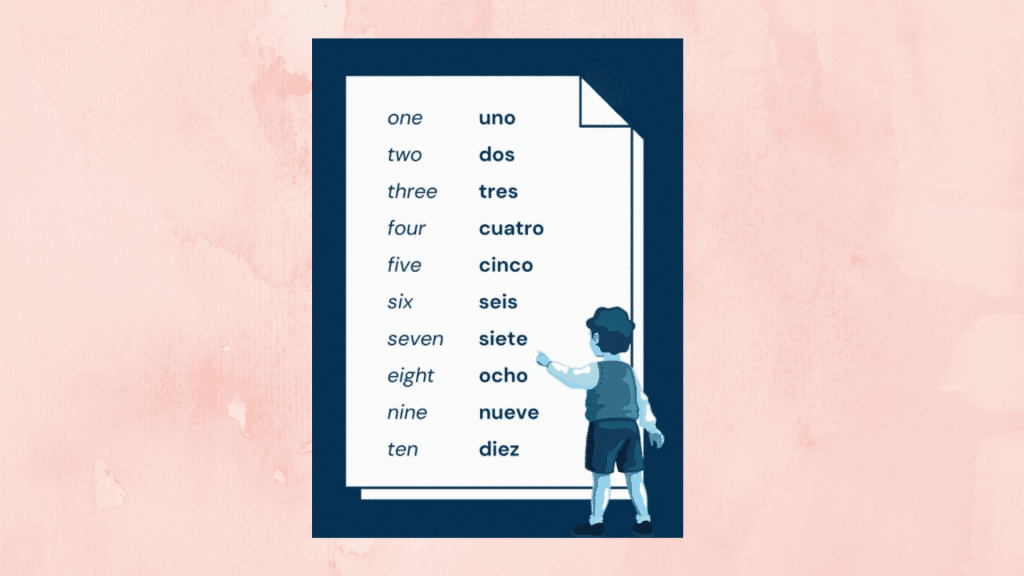Learning numbers in Spanish opens the door to real conversations. Think about it, whether you’re shopping at a market, checking bus times, or playing a game, numbers pop up everywhere.
Once you get comfortable with them, everything else in Spanish feels a little easier. You’ll see patterns that make new words and grammar less intimidating.
Counting also builds confidence, especially for beginners, kids, and travelers who just want to get started without feeling overwhelmed.
Today, I’ll show you that if you can count to 100, you’ll already have a tool you can use daily. Let’s break it down step by step so you can see how simple it really is.
Why Learn Numbers in Spanish?
Numbers are one of the most practical tools in the Spanish language. They’re needed when handling money, planning travel, or even playing simple games.
They also appear in classrooms, on signs, and in everyday interactions with native speakers. Knowing them makes it easier to engage in genuine conversations.
Counting from 1 to 100 in Spanish builds early confidence. It’s a skill that prepares kids, beginners, and travelers to expand their language use into more complex areas.
Understanding numbers also introduces patterns that appear across Spanish. Once you see those patterns, learning new words and grammar feels much more manageable.
How to Count to 100 in Spanish

Spanish numbers are easier than they may seem at first. They follow clear patterns that repeat as you move from smaller numbers to larger ones.
The first step is to memorize numbers 1-20 since these are unique and don’t follow a simple formula. Once you know them, you have a solid foundation.
Next, you learn the tens, such as 30, 40, 50, and so on. These words stay the same and act as building blocks for higher numbers.
After that, you simply combine the tens with the smaller numbers. This pattern makes it easy to count from 21 all the way to 99.
Here is the full list of numbers in Spanish from 1 to 100, so you can learn step by step:
Numbers in Spanish 1-20
| Number | Spanish |
|---|---|
| 1 | uno |
| 2 | dos |
| 3 | tres |
| 4 | cuatro |
| 5 | cinco |
| 6 | seis |
| 7 | siete |
| 8 | ocho |
| 9 | nueve |
| 10 | diez |
| 11 | once |
| 12 | doce |
| 13 | trece |
| 14 | catorce |
| 15 | quince |
| 16 | dieciséis |
| 17 | diecisiete |
| 18 | dieciocho |
| 19 | diecinueve |
| 20 | veinte |
Numbers in Spanish 21-29
| Number | Spanish |
|---|---|
| 21 | veintiuno |
| 22 | veintidós |
| 23 | veintitrés |
| 24 | veinticuatro |
| 25 | veinticinco |
| 26 | veintiséis |
| 27 | veintisiete |
| 28 | veintiocho |
| 29 | veintinueve |
Numbers in Spanish 30-39
| Number | Spanish |
|---|---|
| 30 | treinta |
| 31 | treinta y uno |
| 32 | treinta y dos |
| 33 | treinta y tres |
| 34 | treinta y cuatro |
| 35 | treinta y cinco |
| 36 | treinta y seis |
| 37 | treinta y siete |
| 38 | treinta y ocho |
| 39 | treinta y nueve |
Numbers in Spanish 40-49
| Number | Spanish |
|---|---|
| 40 | cuarenta |
| 41 | cuarenta y uno |
| 42 | cuarenta y dos |
| 43 | cuarenta y tres |
| 44 | cuarenta y cuatro |
| 45 | cuarenta y cinco |
| 46 | cuarenta y seis |
| 47 | cuarenta y siete |
| 48 | cuarenta y ocho |
| 49 | cuarenta y nueve |
Numbers in Spanish 50-59
| Number | Spanish |
|---|---|
| 50 | cincuenta |
| 51 | cincuenta y uno |
| 52 | cincuenta y dos |
| 53 | cincuenta y tres |
| 54 | cincuenta y cuatro |
| 55 | cincuenta y cinco |
| 56 | cincuenta y seis |
| 57 | cincuenta y siete |
| 58 | cincuenta y ocho |
| 59 | cincuenta y nueve |
Numbers in Spanish 60-69
| Number | Spanish |
|---|---|
| 60 | sesenta |
| 61 | sesenta y uno |
| 62 | sesenta y dos |
| 63 | sesenta y tres |
| 64 | sesenta y cuatro |
| 65 | sesenta y cinco |
| 66 | sesenta y seis |
| 67 | sesenta y siete |
| 68 | sesenta y ocho |
| 69 | sesenta y nueve |
Numbers in Spanish 70-79
| Number | Spanish |
|---|---|
| 70 | setenta |
| 71 | setenta y uno |
| 72 | setenta y dos |
| 73 | setenta y tres |
| 74 | setenta y cuatro |
| 75 | setenta y cinco |
| 76 | setenta y seis |
| 77 | setenta y siete |
| 78 | setenta y ocho |
| 79 | setenta y nueve |
Numbers in Spanish 80-89
| Number | Spanish |
|---|---|
| 80 | ochenta |
| 81 | ochenta y uno |
| 82 | ochenta y dos |
| 83 | ochenta y tres |
| 84 | ochenta y cuatro |
| 85 | ochenta y cinco |
| 86 | ochenta y seis |
| 87 | ochenta y siete |
| 88 | ochenta y ocho |
| 89 | ochenta y nueve |
Numbers in Spanish 90-99
| Number | Spanish |
|---|---|
| 90 | noventa |
| 91 | noventa y uno |
| 92 | noventa y dos |
| 93 | noventa y tres |
| 94 | noventa y cuatro |
| 95 | noventa y cinco |
| 96 | noventa y seis |
| 97 | noventa y siete |
| 98 | noventa y ocho |
| 99 | noventa y nueve |
The Number 100 in Spanish
| Number | Spanish |
|---|---|
| 100 | cien |
When the number stands alone, you say cien. For numbers past 100, it changes to ciento. But for now, 100 is simply cien.
Tips to Remember Numbers in Spanish
Below are some tips to remember numbers in Spanish:
- Practice in small groups instead of trying to memorize everything at once. Start with 1-20, then learn the tens like 30, 40, and 50, before combining them.
- Repeat numbers out loud every day so they stick in your memory. Saying them often helps build confidence and improve pronunciation.
- Write the numbers in both digits and Spanish words while practicing. Seeing them side by side strengthens the connection in your mind.
- Use songs, rhymes, or counting games designed for kids to make practice enjoyable. Music and repetition are powerful tools for remembering Spanish numbers.
- Try watching short educational videos that count from 1 to 100 in Spanish. Following along visually and verbally makes learning faster and more fun.
Best Videos to Practice Counting
Videos are a great way to hear the correct pronunciation of numbers in Spanish. The combination of music and repetition makes them especially effective for children and beginners.
Here are some popular options worth trying:
- SPANISH Numbers from 1-100 by Learning Time Fun – short and simple, perfect for younger learners.
- Count to 100 in Spanish by Jack Hartmann – a catchy song that makes counting memorable.
- Numbers 1-100 in Spanish by Woodward Spanish – a clear breakdown designed for beginners of any age.
Conclusion
Now you know how to count to 100 in Spanish with a simple step-by-step guide. From uno to cien, the rules and patterns make learning easy to follow.
Numbers in Spanish are an integral part of daily life, so regular practice is essential. Try saying them out loud, writing them in notebooks, or using songs and short videos.
The more often you use Spanish numbers, the more natural they will feel. Keep practicing until counting from 1 to 100 in Spanish becomes second nature.
Start today and share this guide with friends or family who also want to learn Spanish numbers quickly and confidently.











